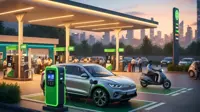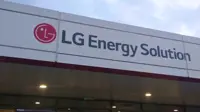New iron-carbon electric vehicle batteries could store higher energy density
13 May 2011
One of the biggest challenges for researchers continues to be the development of high-performance energy storage, which is the prerequisite for the economic efficiency of future electro-mobility and for the integration of renewable energies in the energy system.
 |
| Research into new storage materials: Carbon nanotubes facilitate electric conduction. (Photo: INT) |
At the Institute of Nanotechnology of Karlsruhe Institute of Technology (KIT), a novel approach to battery architecture and use of materials has now been developed, which promises enormous improvements with respect to the amount of energy stored and the costs. This new approach might considerably increase the cruising range of electric cars in the long term.
The amount of energy stored in a battery is lower by a factor of 50 than the energy in a fuel tank of the same size. ''Use of conventional lithium-ion battery materials is expected to allow slight improvements only,'' says Dr Maximilian Fichtner, head of the energy storage group of the KIT Institute of Nanotechnology. To considerably enhance the performance, it was therefore necessary to develop new approaches to both the development of materials and battery architecture.
Fichtner and his team focussed on iron-carbon material, which can store more energy in smaller space. The problem: the material does not have cyclic stability and its storage capacity decreases rapidly when the battery is charged and discharged repeatedly.
The KIT Institute of Nanotechnology then developed a new approach for the synthesis of iron-carbon storage materials (and have applied for a patent). In this technique,
carbon wires containing novel nano-structures are formed by heating a mixture of metal organic materials and a lithium salt.
The specific capacity (its capability of storing energy) of the new cathode material is about twice that of current batteries. ''This is the first example worldwide of a stable conversion material, by means of which far more electrons and lithium can be ''packed'' on small space than by conventional methods,'' underlines Fichtner.
''Production is simple and inexpensive and the high capacity of the iron-carbon electrode is maintained for a long time. This is an enormous progress compared to materials used so far. If we succeed in fully exhausting the potential of this new material, we can improve the storage density of lithium-ion batteries by the factor of 5,'' says Fichtner.






















